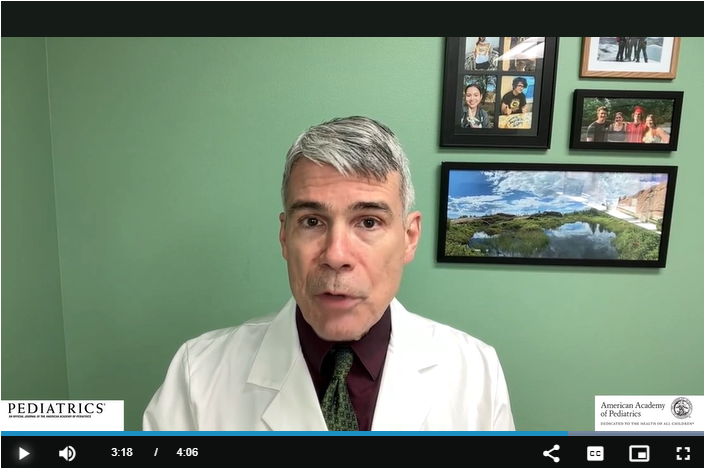
Two major causes of acute respiratory illness in children are respiratory syncytial virus (RSV) and human metapneumovirus (HMPV). The viruses are genetically related, causing primarily upper respiratory symptoms, and for some, lower respiratory tract illness. RSV is the leading cause of infant hospitalization in the U.S. and is the major cause of outpatient visits for young children. HMPV is also a major cause of acute respiratory illness resulting in medical attention.
Previous studies have shown that RSV causes severe respiratory illness in young infants, while suggesting HMPV may affect older babies and young children. However, research comparing the severity of these diseases has offered no consensus. A weakness of many comparative studies is their reliance on retrospective convenience samples and irregular clinician testing. Thus, there had been no rigorous collection and comparison of RSV and HMPV patient data. Despite this, many pediatric clinicians perceive these two diseases to be very similar or identical. A rigorous collection and evaluation of data comparing RSV and HMPV was needed.
Researchers at seven U.S. pediatric medical centers set out to prospectively conduct data collection and evaluation to produce the necessary controlled comparison of the two diseases between December 2016 and March 2020. The results of their study, “Human Metapneumovirus and Respiratory Syncytial Virus in Children: A Comparative Analysis,” were published recently in the journal Pediatrics.

This group comprises the Centers for Disease Control and Prevention (CDC)-supported New Vaccine Surveillance Network (NVSN). It employed the organization’s study design for the project. The group includes researchers from Nashville, Tennessee; Rochester, New York; Cincinnati, Ohio; Seattle, Washington; Houston, Texas; Kansas City, Missouri; and Pittsburgh, Pennsylvania. This study includes the work of John V. Williams, MD, professor and chair of the Department of Pediatrics (previously of the University of Pittsburgh before his sojourn to Wisconsin). His research focus has been the entry, immunity, and pathogenesis of HMPV. Notably, two of the study’s authors are from the CDC. Leah Goldstein, with a MPH in epidemiology, has been with the CDC since 2023. Heidi Moline, MD, MPH, is a pediatrician and epidemiologist with the CDC since June 2020, and is a principal investigator for the NVSN since 2022.
From December 2016 to March 2020, researchers prospectively enrolled children younger than 18 with acute respiratory illness at pediatric hospitals and emergency departments (EDs). Overall, 8,605 children were enrolled with RSV or HMPV, determined by nasal swab and reverse transcriptase-polymerase chain reaction. This group included 5,329 who were hospitalized with RSV (4,398) or HMPV (931), and 3,276 ED patients with RSV (2,371) or HMPV (905).
Variables among study subjects were closely controlled according to duration and severity of illness. Children with co-detection of both RSV and HMPV were excluded, but other co-detections were included. Inpatient and ED enrollment occurred year-round. Seasons following 2020 were not included in the analysis due to atypical circulation and epidemiology of the viruses during the COVID-19 pandemic. (RSV and HMPV circulation have shifted progressively back to pre-pandemic levels.)
The results of the study were clear. They show that while RSV and HMPV are related, they are distinct viruses that affect different age groups of infants and children with notably distinct severity and pathogenesis. RSV affected infants younger than 6 months of age most severely: they were more likely to be hospitalized than other age groups, with 30% of RSV hospitalizations occurring in those younger than 3 months old and nearly half among infants younger than 6 months old. (See Figure 1 and Table 1 in the study.)
In contrast, HMPV rarely appeared in infants below 6 months, with only 6% of HMPV hospitalizations in those below 3 months, but it was more prevalent in older children. Children hospitalized with HMPV were more likely to be diagnosed with pneumonia than those with RSV.
“RSV and HMPV should not be considered ‘the same respiratory bug’ by pediatricians and family medicine clinicians,” Williams said. “This study makes the differences clear through the careful analysis of the large set of data: they affect different age groups with differing severity, they interact with other infections differently. Their seasons differ as well, with HMPV usually peaking after RSV. For the clinician, testing to identify the virus, rather than forming an assumption from initial patient presentation, is strongly supported by this study.”
The 2023 approval of two new products to prevent respiratory illness caused by RSV further enhances the value of this study. The Food and Drug Administration (FDA) and the CDC Advisory Committee on Immunization Practices approved and recommended the use of nirsevimab, a long-acting monoclonal antibody for infants and young children, and secondly, a vaccine for pregnant women. The introduction of RSV prevention products could affect the severity and seasonality of RSV, and perhaps change the epidemiology of HMPV. However, this study suggests that interventions to prevent severe RSV in the very young may not be effective against severe HMPV in older infants and children.
Data about the seasonality and epidemiology of both viruses are needed to establish a baseline for future analyses of the effect of RSV prevention products, which will also guide future HMPV prevention development and use.